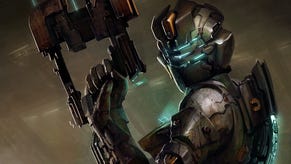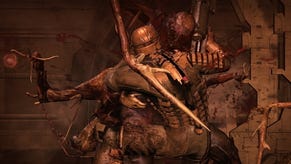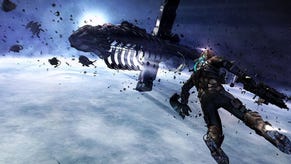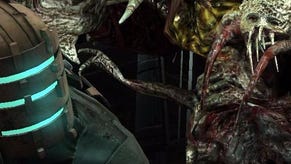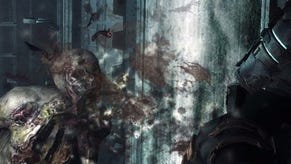Dead Space 2
No one can hear you cream.
Some games elicit fear in their player through ambience: the hollow grumble of a cello, a mortal cry for help daubed in blood on a wall, a rocking horse swaying in an unfamiliar breeze as an unseen child sings a nursery rhyme.
Other games engender fear through brute shocks: sudden power failures that rob you of a sense, floorboards which give way in showers of splinters, monsters who burst through walls you had ticked off as safe in your subconscious.
Then there are those games which unsettle the player by restraining their reach into the world. There's a limit to the amount of ammunition or health packs which can be carried at any given time. Save points are spread out between long tightropes of danger. Walls close in, creating a sense of claustrophobia and panic when trying to line up a headshot in a confined space.
Dead Space 2 does all of this.
If you fear the unknown, you can approach the sequel to Visceral Games' galactic survival horror with some confidence. We may be three years from the hellish events experienced on board the USG Ishimura but in most meaningful ways, Dead Space 2 picks up at the moment its predecessor ended. Taking its cues from Event Horizon, Resident Evil 4 and Doom 3, it's a rollercoaster ride.
Once again you step into the shoes of engineer hero Isaac Clarke. Having chased the promise of his lost girlfriend in the first game, he is now chased by her ghost. She invades your consciousness, eyes swapped out for white beams of light, ghoulish hands as cloying as her melancholy dialogue.
Her presence in the game not only enables the game's designers to shock you with quiet-quiet-LOUD interruptions every 15 minutes or so. It also serves to indicate the decaying state of Isaac's mind.
The game opens in a psychiatric ward on space station The Sprawl. As you break free from the leather straps of your bed, struggling against the restraints of your strait jacket and your own sense of imbalance, you find that yours is an avatar robbed of most ability.
Like a drunk driver you manoeuvre Isaac through dark corridors, ducking explosions and sidestepping the lunges of the long-limbed Necromorph monsters that tear at your clothes. For the first 15 minutes of the game there is no way to fight back, creating a sense of helplessness backed up by a steely desire for revenge.

But by the end of the first half-hour you have full access to those abilities with which Isaac finished the fight in the first game: the plasma cutter, used to shoot the limbs from the Necromorphs, and the power of telekinesis, used to suspend those limbs in air and fire them back through their torsos.
The decision not to drip feed weapons and abilities from early on in the game is a wise one. An extensive range of tactical combat options is open from the start, teaching you the importance of conserving ammo by using telekinesis to turn objects lying around the environment into projectile weapons. You also learn the value of using statis shots to slow-motion enemies mid air, inches from your face, giving you a moment to breathe before you squeeze the trigger.
Once again Visceral shifts the focus of gunplay away from headshots, asking that you incapacitate enemies by precision-shooting their limbs. Blast the legs off a Necromorph and it'll pull its grotesque body along the ground towards you, a nightmare reanimated. On anything other than the easiest difficulty, you'll need to stomp on what remains with a heavy boot to ensure it doesn't crawl back to life minutes later.



